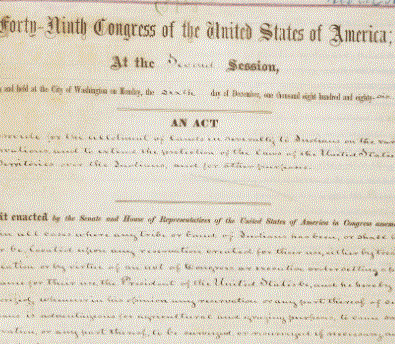Boarding School and Land Allotment Eras 1879-1933
1902
Choctaw, Muscogee Creek, Cherokee, and Chickasaw Nations in Indian Territory are terminated

Based on treaties and according to the Removal Act, the tribes had ceded territory in the southeast and had removed to Indian Territory to “live in peace and as Nations in perpetuity -- as long as the grasses grow and the rivers run.” Tribes claim that the Dawes Act’s “purpose was to destroy tribes as territorial, economic and political entities” (Nies, 1996, p. 308). They refuse both to sell energy-rich surplus lands and administer the allotment policy. They draw up their own plans to manage railroad routes through their territories and to develop strong governments, schools, and newspapers. Congress passes the Choctaw and Chickasaw Land Allotment Act, the Creek Land Allotment Act, and the Cherokee Land Allotment Act to break up communally held tribal lands, force the sale of surplus land in their territories to non-Indians, and select disposition of town sites in what is now Oklahoma. Cherokees are given a homestead assignment and “away lands” to reflect land use patterns, but White settlers invade the away lands (Debo, 1940).